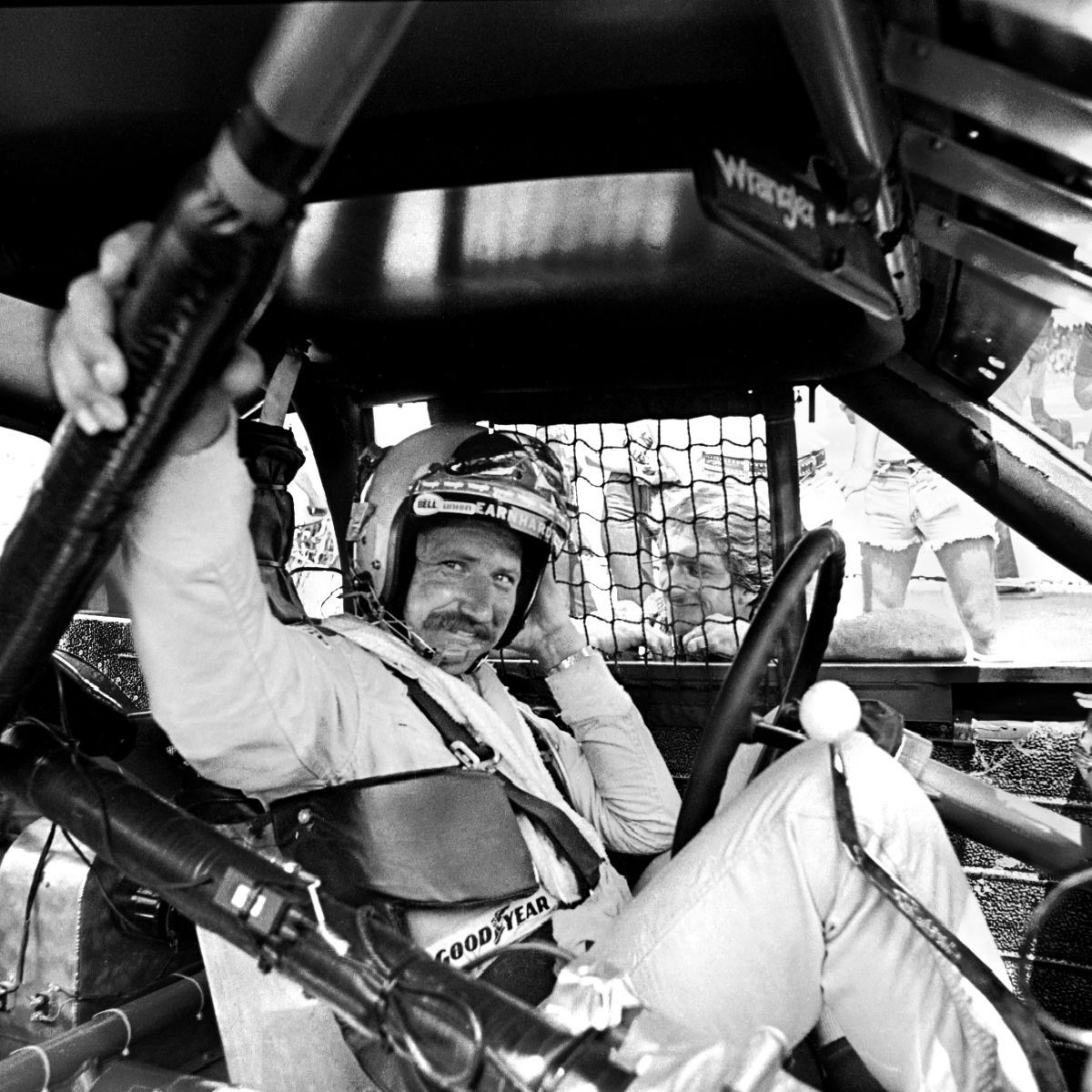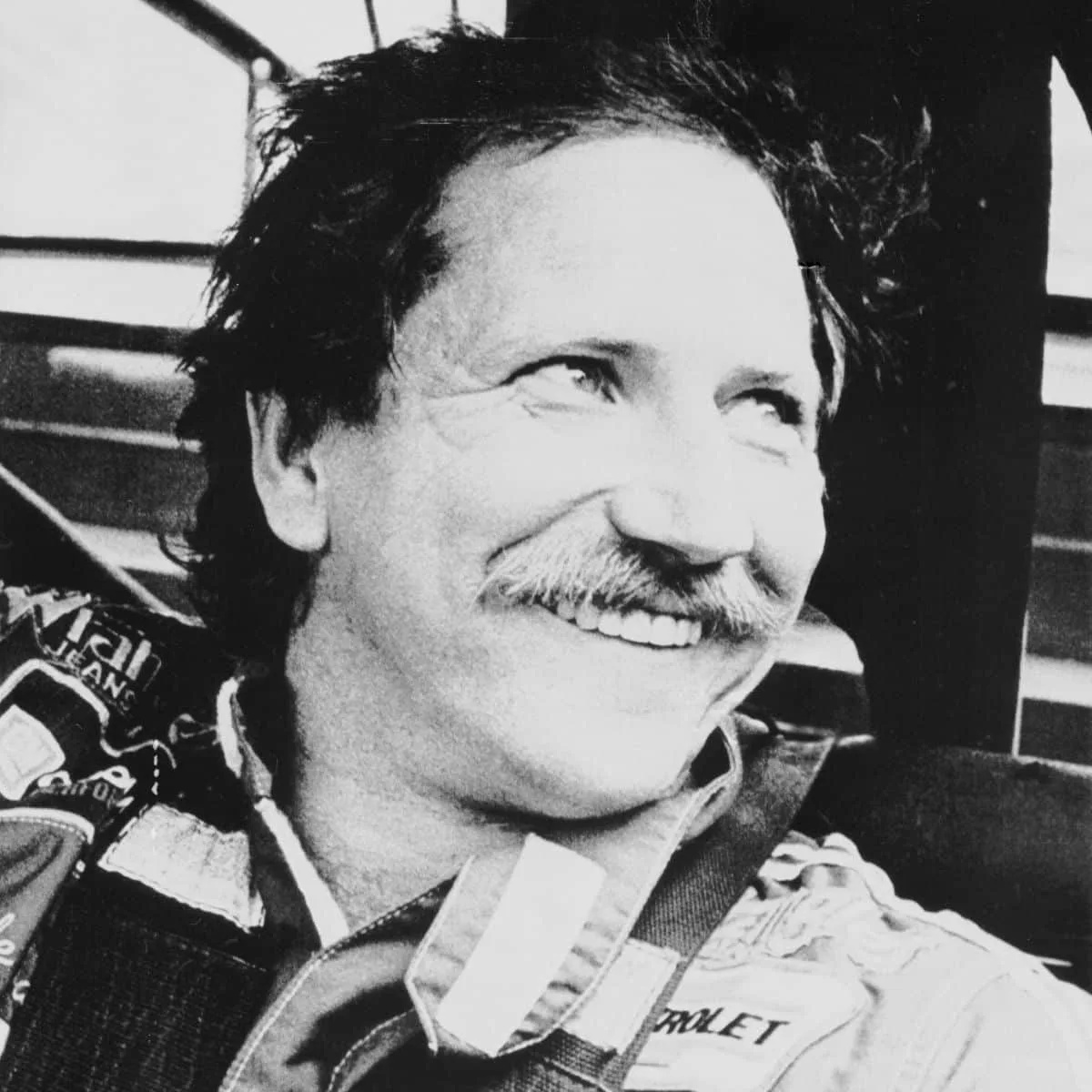What Were Dale Earnhardt's Last Words? Unraveling A NASCAR Legend's Final Moments
The roar of engines, the blur of speed, and the sheer passion of racing were, for many, personified by one man: Dale Earnhardt. His passing at the Daytona 500 on February 18, 2001, left a mark on NASCAR and its fans that, frankly, still feels incredibly raw and significant even today. People often wonder about the specifics of that tragic day, and one question that consistently comes up, a bit like a whisper through the years, is about his final words.
That particular race, you know, it was a sunny day in Florida, and the atmosphere was electric, as it typically is for the Daytona 500. Nobody could have imagined the somber turn events would take. For many, it's almost as if time stopped for a moment when the news came out, changing the sport in ways nobody could have foreseen. It's a memory that, for a lot of us, is etched very deeply.
This article aims to respectfully explore the circumstances surrounding Dale Earnhardt's final race and address the deeply personal question about his last words. We'll also look at his enduring legacy and how his passing, in a way, prompted massive changes that have made racing safer for everyone involved. So, let's take a closer look at this important part of racing history.
Table of Contents
- Biography of Dale Earnhardt: The Intimidator's Journey
- The Daytona 500: February 18, 2001
- The Question of "Last Words"
- NASCAR Safety After Earnhardt: A Transformative Shift
- Dale Earnhardt's Enduring Legacy
- Frequently Asked Questions
Biography of Dale Earnhardt: The Intimidator's Journey
Dale Earnhardt, born Ralph Dale Earnhardt Sr., was, you know, a true titan in the world of stock car racing. He came from humble beginnings in Kannapolis, North Carolina, and pretty much forged a path that led him to become one of the most recognized and celebrated athletes in American sports history. His aggressive driving style, often called "The Intimidator," earned him a legion of fans and, quite frankly, a few rivals too.
He was, in a way, a force of nature on the track, known for his ability to make bold moves and win races even when it seemed impossible. His career spanned decades, marked by incredible achievements and a connection with fans that was, quite literally, unmatched. He wasn't just a driver; he was, like, a symbol of determination and raw talent. It's almost hard to imagine NASCAR without thinking of him.
Personal Details & Bio Data
| Detail | Information |
|---|---|
| Full Name | Ralph Dale Earnhardt Sr. |
| Born | April 29, 1951 |
| Birthplace | Kannapolis, North Carolina, USA |
| Died | February 18, 2001 (aged 49) |
| Cause of Death | Basilar Skull Fracture |
| Spouse(s) | Latane Brown (m. 1968; div. 1970) Brenda Gee (m. 1971; div. 1979) Teresa Houston (m. 1982) |
| Children | Kerry Earnhardt, Kelley Earnhardt Miller, Dale Earnhardt Jr., Taylor Nicole Earnhardt |
| Nickname | The Intimidator, Ironhead, The Man in Black |
| Career Wins (Cup Series) | 76 |
| Championships (Cup Series) | 7 (tied for most all-time) |
| Inducted | NASCAR Hall of Fame (2010) |
The Daytona 500: February 18, 2001
The 2001 Daytona 500 was, by all accounts, a thrilling race, a real spectacle of speed and strategy. Dale Earnhardt was racing for his team, Dale Earnhardt, Inc. (DEI), and his son, Dale Earnhardt Jr., and teammate Michael Waltrip were running first and second, respectively, in the closing laps. Dale Sr. was, you know, running third, doing what he did best: blocking other drivers to protect his teammates' positions.
On the final lap, as Michael Waltrip was heading towards his first career victory, and Dale Jr. was securing second place, a multi-car accident unfolded behind them in Turn 4. Dale Earnhardt's car, the iconic black No. 3, made contact with Ken Schrader's car and then hit the outside wall head-on. It was a typical racing incident, in a way, one that happens often in the sport.
The crash didn't look, at first glance, to be particularly severe compared to some others seen in racing. His car slid down the track, and he was able to communicate briefly over the radio, which is that, a very important detail. Rescue crews were on the scene quickly, and he was then transported to Halifax Medical Center. The racing world, meanwhile, was celebrating Waltrip's win, completely unaware of the gravity of the situation unfolding.
The Question of "Last Words"
The question of "What were Dale Earnhardt's last words?" is, quite frankly, one that lingers in the minds of many fans. It's a very human thing to wonder about, especially when someone passes so suddenly and unexpectedly. However, the reality is that there's no widely publicized or definitive record of specific "last words" from Dale Earnhardt in the moments leading up to or immediately after his crash.
Reports from the scene and from those involved indicate that he was, in fact, communicating over his team radio after the initial impact. Ty Norris, who was then the executive vice president of Dale Earnhardt Inc., later recounted that Dale Earnhardt, you know, spoke on the radio after the crash, saying something like, "I'm a little tight," referring to how his car was handling. This was a common racing term, indicating a car that doesn't turn easily.
However, this communication was about his car's performance, not a personal farewell or a profound statement, which is that, what people often imagine when they ask about "last words." It was, basically, a professional observation during a race. Given the nature of his injuries, which were later determined to be a basilar skull fracture, it's highly unlikely he would have been able to utter anything coherent or personal after the fatal impact itself. The incident was, you know, incredibly sudden.
So, while the idea of a poignant final statement is something we might wish for, the truth is, his last known communication was, in a way, just a routine racing comment. It really highlights how quickly and unexpectedly things can change in such a high-speed sport. The focus, for him, was still on the race, even in those very last moments, which, in some respects, speaks volumes about his dedication.
NASCAR Safety After Earnhardt: A Transformative Shift
Dale Earnhardt's passing, while incredibly tragic, served as a powerful catalyst for unprecedented safety improvements in NASCAR, which, you know, really transformed the sport. Before his accident, there had been a series of fatalities in racing, and his death brought the issue of driver safety to the absolute forefront. It was, quite honestly, a wake-up call that couldn't be ignored.
One of the most significant changes was the mandatory adoption of the Head and Neck Support (HANS) device. This device, which was, you know, already available but not widely used in NASCAR, helps prevent basilar skull fractures, the very injury that claimed Earnhardt's life. It tethers the driver's helmet to their shoulders, reducing the whipping motion of the head during a sudden stop or impact. Its implementation was, frankly, a huge step forward.
Another major development was the widespread installation of SAFER (Steel and Foam Energy Reduction) barriers at tracks. These barriers are designed to absorb and dissipate crash energy much more effectively than traditional concrete walls, significantly reducing the forces on a driver during an impact. This was, in a way, a massive undertaking for tracks across the country, but absolutely necessary.
Beyond these visible changes, there were also extensive revisions to car design, including improved seat construction, seatbelt systems, and roll cage enhancements. NASCAR also began a deeper investigation into crash data, using advanced technology to understand impacts better and design safer vehicles. This commitment to safety has, arguably, made NASCAR one of the safest forms of motorsport in the world today. It's a legacy that, you know, continues to protect drivers, thanks in large part to the lessons learned from that incredibly difficult day. You can learn more about safety improvements on our site, and also find details about NASCAR's commitment to driver well-being.
Dale Earnhardt's Enduring Legacy
Dale Earnhardt's legacy extends far beyond the statistics of his 76 career wins and seven championships; it's, in a way, woven into the very fabric of NASCAR. He was a generational talent, a figure who transcended the sport and became a cultural icon. His passing, while heartbreaking, undeniably solidified his place in history and, you know, spurred changes that saved countless lives.
For fans, the black No. 3 car and the "Intimidator" persona remain powerful symbols. He represented a certain grit, a never-give-up attitude that resonated deeply with working-class America. His connection with his fanbase was, arguably, unlike any other driver. People either loved him or loved to hate him, but everyone, basically, paid attention when he was on the track.
His family, particularly his son Dale Earnhardt Jr., has carried on his racing heritage, keeping the Earnhardt name prominent in the sport. The Dale Earnhardt Foundation continues to support various charitable causes, further cementing his positive impact on the world beyond racing. His influence is still felt in the way races are run, the way drivers compete, and, quite simply, the way fans remember a true legend.
The impact of his passing on safety standards is, perhaps, his most profound and lasting contribution. The mandatory HANS device and SAFER barriers are direct results of the lessons learned from that tragic day. These innovations have, in fact, prevented countless injuries and fatalities, making the sport safer for every driver who straps into a stock car. So, in a very real sense, his legacy continues to protect those who follow in his tire tracks.
Frequently Asked Questions
Q: Was Dale Earnhardt wearing a HANS device during his fatal crash?
A: No, Dale Earnhardt was, you know, not wearing a HANS device during the 2001 Daytona 500. At that time, the HANS device was available but not yet mandatory in NASCAR. His passing played a significant role in making the HANS device a required piece of safety equipment for all NASCAR drivers, which, in a way, changed everything.
Q: What was the official cause of Dale Earnhardt's death?
A: The official cause of Dale Earnhardt's death was a basilar skull fracture. This type of injury occurs at the base of the skull, where the brainstem connects to the spinal cord. The rapid deceleration during the crash caused his head to whip forward, leading to this fatal injury. It was, basically, a very sudden and severe impact.
Q: How did Dale Earnhardt's death change NASCAR?
A: Dale Earnhardt's death led to, you know, some really sweeping safety changes in NASCAR. The sport made the HANS device mandatory for all drivers and began installing SAFER barriers at tracks to absorb crash energy. There were also significant improvements to car design, including better seats, seatbelts, and roll cages. These changes have, quite frankly, made NASCAR much safer for its competitors, which is that, a lasting part of his story.

What were dale earnhardt’s last words – Artofit

What Were Dale Earnhardt’s Last Words? - Famous People Today

What Were Dale Earnhardt’s Last Words? - Famous People Today